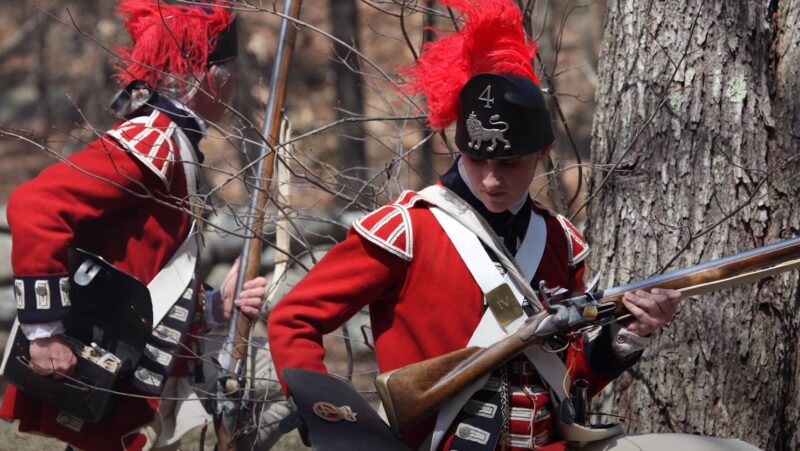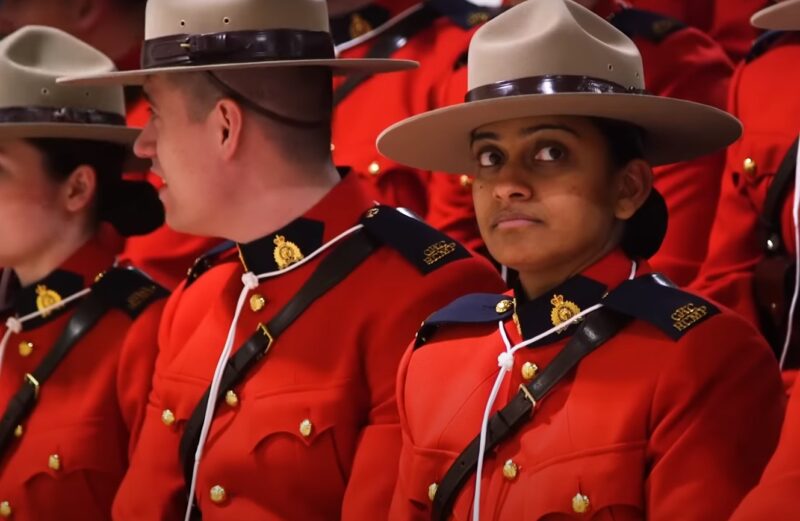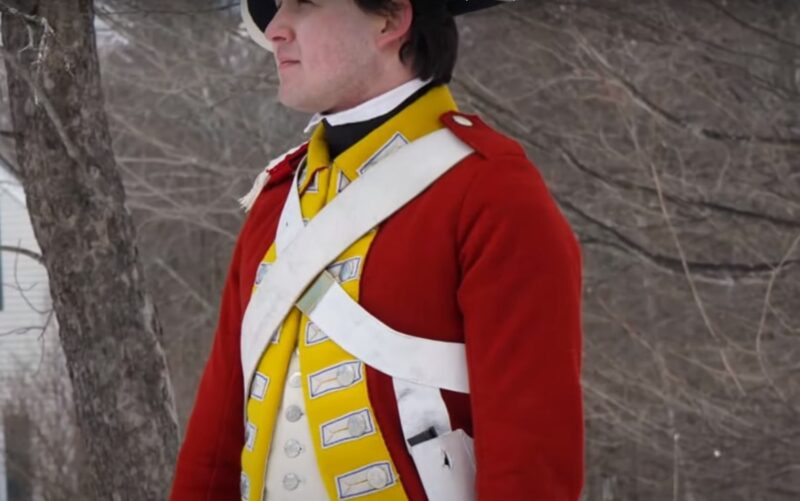The red coat, steeped in British military history, stands as a testament to the valor and discipline of England’s armed forces. It has endured through centuries, evolving from a practical battlefield necessity to a ceremonial garment imbued with deep tradition.
This blog post looks into the rich tapestry of the red coat’s past, tracing its journey from the battlefields of the English Civil War to the parades of modern-day London. As we explore the origins and evolution of this iconic uniform, we uncover the stories and significance that have cemented the red coat as a symbol intrinsically linked to the identity of British servicemen.
It is a garment that not only adorns soldiers but also encapsulates the enduring spirit of a nation’s military heritage.
The Significance

The red coat was much more than just clothing; it symbolized the British military’s dedication to discipline and order. Its bright red color made soldiers easy to spot during battles, helping with organization and leadership.
More than that, it brought a strong sense of unity and pride among the soldiers. Wearing the red coat was a matter of honor, showing their loyalty to their fellow soldiers and their country.
Red was chosen for practical reasons; it was a color that could be easily produced in large quantities and was visible from a distance. Additionally, red dye was relatively inexpensive and could hide bloodstains, which was considered beneficial in battle.
Women were also fond of individuals in uniform. Mrs. Bennet took the lead in expressing her admiration for men in uniform in Pride and Prejudice.
I remember the time when I liked a red coat myself very well—and, indeed, so I do still at my heart; and if a smart young colonel, with five or six thousand a year, should want one of my girls I shall not say nay to him; and I thought Colonel Forster looked very becoming the other night at Sir William’s in his regimentals.
Military Tradition
The red coat goes beyond its original role as a uniform to become an enduring symbol of military tradition. It encapsulates centuries of British military history, from the fields of the English Civil War to the ceremonial parades of today.
The red coat continues to be worn with pride in ceremonial full-dress and mess dress uniforms, not just in the United Kingdom but across the Commonwealth of Nations. This tradition honors the sacrifices of those who served before and serves as a reminder of the continuity of military values across generations.
Cultural Impact
Beyond its military significance, the red coat has etched itself into the cultural fabric of Britain. It stands as a poignant reminder of the country’s imperial past, reflecting the global reach and influence of British military traditions.
The red coat is not merely a garment but a symbol of a bygone era, a piece of history that continues to influence military dress and ceremonial practices around the world. Its cultural impact is undeniable, as it represents a legacy that has shaped and continues to shape, the identity of a nation and its people.
The Origins
The vibrant history of the red coat is as rich and varied as the garment itself. Its earliest roots are firmly planted in the Tudor period, a time when the Yeomen of the Guard and the Yeomen Warders were first seen adorned in the royal colors of the House of Tudor: a striking combination of red and gold.
These initial instances were more than mere fashion choices; they were the precursors to what would eventually become a national symbol of uniformity and service.
The New Model Army
The significance of the red coat took on a new dimension during the tumultuous times of the English Civil War. It was then that the New Model Army, representing the Parliamentary forces, embraced the red coat as part of their standard-issue military attire.
This adoption marked a pivotal moment in the history of English military uniforms, as the red coat began to be recognized not just as clothing, but as a potent symbol of English military strength and resolve.
Solidifying a National Uniform
As the red coat continued to be worn by successive generations of soldiers, it became more than a practical piece of military equipment. It evolved into a symbol of national identity, embodying the spirit of the English people and their military aspirations.
The red coat’s journey from the battlefields of the past to the ceremonial events of the present day reflects the enduring legacy of a garment that has become synonymous with British military tradition and pride.
Through the Ages
| Century | Usage |
|---|---|
| 16th | Adopted by English soldiers during the Tudor conquest of Ireland. |
| 17th | Worn by the New Model Army in the English Civil War. |
| 18th | Used by British infantry, including in the American Revolution. |
| 19th | Scarlet tunic adopted for all ranks. |
Influence Beyond Britain

The red coat, once a staple of the British infantry, has had a profound impact on military uniforms around the world. Its adoption by other militaries is a testament to its iconic status.
During the 18th and 19th centuries, the red coat was not only used by the British military but also by the British Colonial Auxiliary Forces and the British Indian Army. This widespread use helped cement the red coat as a symbol of military might and discipline far beyond the shores of England.
Significance in the Commonwealth
Even after the practical retirement of the red coat in favor of khaki for field duties in the 20th century, its ceremonial importance has persisted. Many countries within the Commonwealth of Nations continue to use the red coat for full dress and mess dress uniforms, maintaining a visual connection to their shared military heritage.
A Symbol of Imperial Heritage
The red coat’s influence extends to former British colonies such as New Zealand and Canada, where it is part of formal dress uniforms, paying homage to their imperial past. This adoption reflects not just a military tradition, but also a cultural one, where the red coat serves as a reminder of the historical ties that bind these nations together.
The Red Coat in Global Military Fashion
The red coat’s design elements have influenced military fashion across the globe. Its distinctive color and style have inspired various adaptations, contributing to the diverse tapestry of military attire. From the vibrant uniforms of the Zouaves to the formal dress of European armies, the red coat’s legacy is evident in the sartorial choices of soldiers worldwide.
The red coat’s global influence is undeniable. It has shaped the military traditions and ceremonial practices of nations around the world, standing as a symbol of a shared military past and a continuing legacy of discipline, unity, and pride.
FAQ
How did the red coat influence civilian fashion trends?
The red coat’s popularity in the military influenced civilian fashion, particularly in the 18th and 19th centuries. Elements like brass buttons, epaulets, and the distinct red color were incorporated into civilian clothing, reflecting the prestige associated with military attire.
Were there any tactical disadvantages to the red coat in combat?
Yes, the bright red color made soldiers more visible to the enemy, especially in open fields. This visibility was a significant disadvantage in skirmishes and ambushes, where camouflage would have been more beneficial.
Has the red coat been featured in any significant artistic works?
The red coat has been a popular subject in art, symbolizing British military power and history. It features prominently in paintings depicting historical battles, literature, and films, often used to immediately identify British soldiers.
What changes were made to the red coat over time for practicality?
Over time, the red coat was modified for practicality and comfort. Changes included lighter fabrics for ease of movement, adjustments in cut for better fit, and the addition of pockets and other functional elements.
Is the red coat still used in any military capacity today?
Today, the red coat is primarily used for ceremonial purposes. It is worn during formal events, parades, and other occasions where traditional military dress is appropriate. It is no longer used in combat or field operations.
Final Words
In conclusion, the red coat, a symbol steeped in British military history, represents much more than a mere piece of clothing. Its journey from the battlefields of the English Civil War to the ceremonial parades of modern-day London encapsulates a rich tapestry of history and tradition.
As a unifying symbol, it fostered discipline and pride among soldiers, evolving beyond its practical battlefield use to become a key element of military and cultural identity. The red coat’s influence extends globally, impacting military fashion and symbolizing the enduring spirit of a nation’s military heritage.
It is a testament to the legacy of the British armed forces, embodying the values and history of a nation and its impact on the world. If statistical systems capture your interest, we invite you to explore our article elaborating on this subject.
